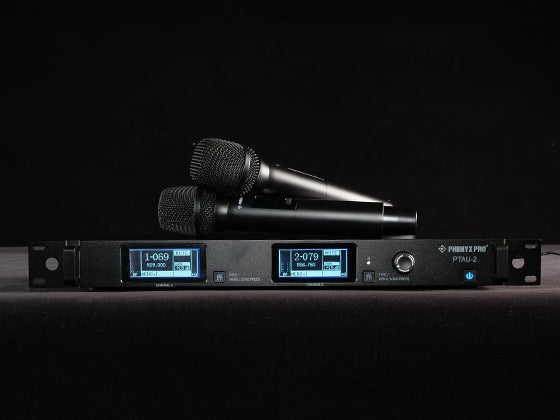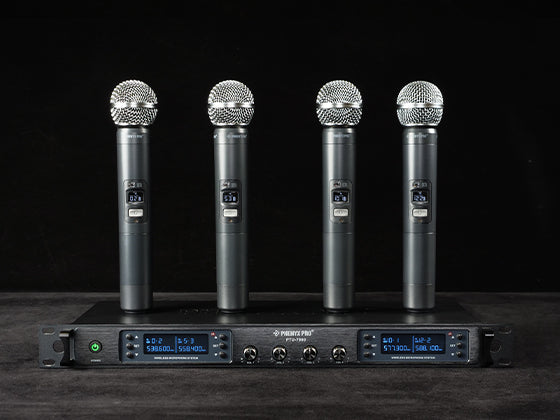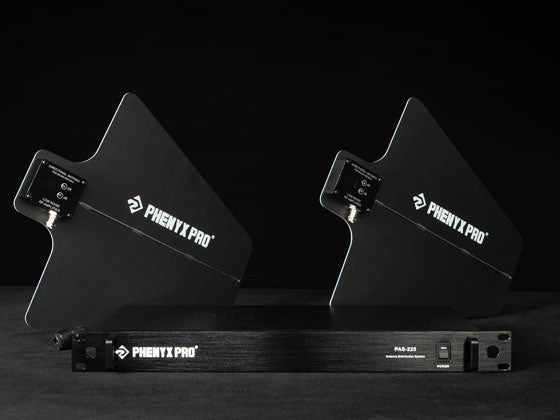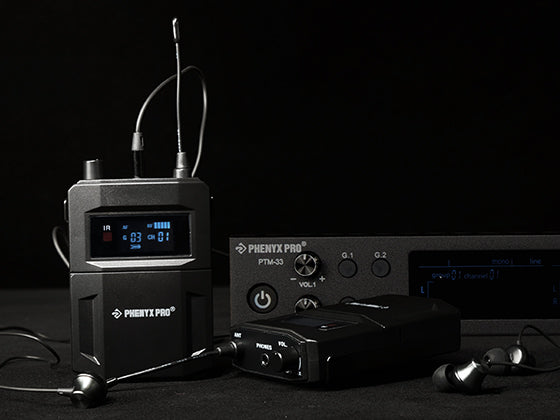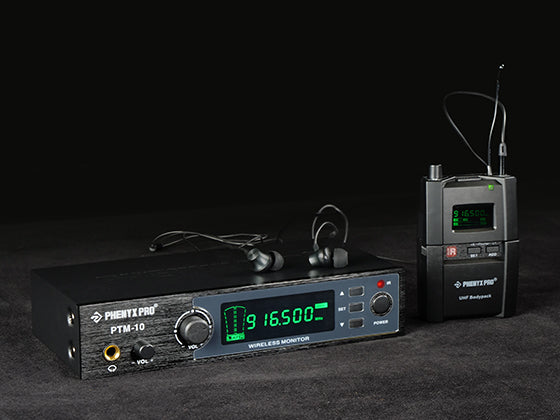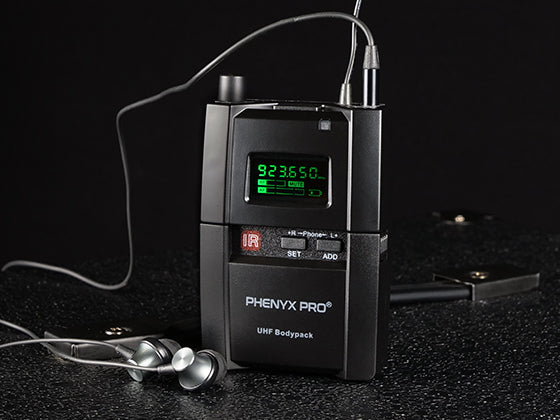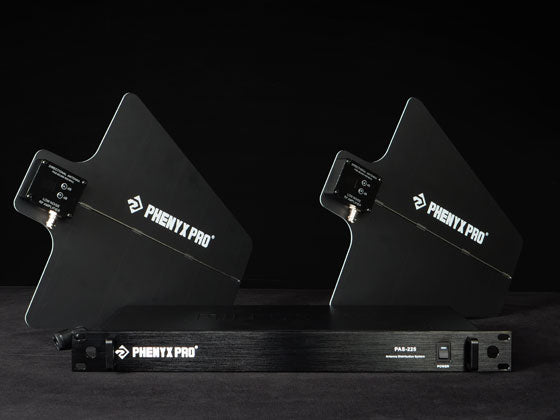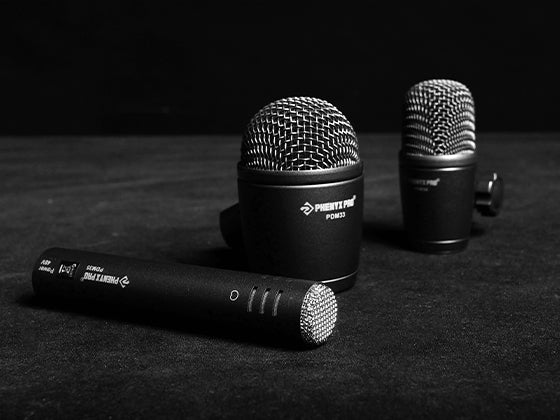Jocelyn
30-9-2022
Operation Guide: How to Set Up The PAS-225X
The PAS-225X, an active antenna distribution system, comes to render optimal wireless audio performance for multiple wireless gears working simultaneously. And this blog will guide you to use it properly to ensure a marvelous audio performance.

In the last blog, Introducing The PAS-225X, we have learned about what an antenna distribution system is and why we should consider adding one to our wireless setup. Proper antenna distribution plays a crucial role in optimizing the performance of multiple wireless systems operating simultaneously. For the sake of your hassle-free setup, this blog will provide you with an all-around guideline to make everything a breeze.
Single System Setup
Before setting up the PAS-225X, please ensure the frequency bands in which wireless microphone systems operate are included in those of the system (400—950 MHz).
Splitter installation. To mount the PAS-225 splitter on a desk or flat surface, attach the adhesive rubber feet (included in the package) to the bottom of the unit for stable standing. To mount the splitter on a rack, make sure it is a 19-inch standard rack and secure the metal brackets using necessary screws (not included in the package).
Coaxial cabling. PAS-225 antenna splitter features 8 RF output jacks to contain up to 8 antenna jacks of wireless microphone receivers. When connecting the splitter and wireless receivers, use short BNC cables (21in) in the package (or TNC cables together with TNC to BNC adapters) to pair up antenna jacks of the receivers to the left and right RF outputs of the distributor. It is recommended to group the receiver antennas into two bands and connect them respectively to the band A and band B RF outputs.
Power supply. PAS-225 antenna splitter has four 12V DC outputs to charge 4 wireless receivers. The package also includes 4 DC power cords to render you an orderly wall wart management.

Remote-mounted antennas. Use long BNC cables (9.5ft) to connect each antenna paddle with ANT jacks of the splitter.
Orientation. Directional antennas are most sensitive to signals coming from their front end, which also means antennas can reject off-axis unwanted noises to reproduce pure signals. Therefore, please place the antenna paddles in a higher position and point the front end to the operating microphones to ensure line-of-sight direction.
Finally, please power up the PAS-225 antenna splitter and wireless receivers. And pair up each needed microphone with its receiver. After adjusting gain setting (up to 8 dB, 16 settings), you can take up sound tests and then stage performance.
PS: When you use only one PAS-225X, the pair of cascade ports of the splitter also allows you to connect an additional pair of antennas from a wireless receiver.

Multiple Systems Setup
If you need to connect more than 10 antenna jacks (normally more than 5 wireless dual receivers) simultaneously, we recommend you connect two or more PAS-225 antenna splitters in parallel via the cascade ports. You can use two 21-inch BNC cables to connect the cascade ports of the splitter and the ANT ports of another one, which allows several splitters to share the same pair of antenna paddles for wireless transmission.
*NOTE: Too many wireless channels used together will cause a crowded and harsh RF environment and excessive signal loss during transmission due to overloaded antennas. In order to ensure transmission quality is as stable and clear as possible, it is recommended that use less than three PAS-225 antenna splitters at the same time.

Gain Setting
When you use BNC cables in the package for you to set up, you will get about 0.7dB cable loss during wireless transmission. Besides, you should take antenna loss into account when calculating signal loss in transmission. Antenna loss is relevant to operation distance and multipath cancellation (we will explain how it comes in the next blog).
To make up for the signal loss, please adjust the amplified gain (suggest more than 3 dB) to customize the range and amplify the signal. However, excessive amplification is not always good; otherwise, it may lead to dropouts and signal noises since antenna paddles need to pick up excessive signals from their front end. You'd better set the appropriate amount of gain to generate clearer signals received with a better signal-to-noise ratio (SNR).
Notice
- Remove any irrelevant objects at least 60cm/3ft around each antenna paddle.
- Remove all barriers between two antenna paddles.
- Remove large metal objects in the line of sight.
- Avoid people or other objects in between transmitters and antenna paddles as much as possible.
- Keep away from too many personal electronics, such as smartphones and computers.
Distributor Vs. Combiner
After going through the setup guidance for the PAS-225X, we would also like to spend some time covering the topic of how a distribution system differs from an antenna combiner. This has caused quite some confusion for our users.
We all know that wireless signals are transmitted in specific directions. In the wireless microphone system, a microphone (transmitter) transmits the wireless signal to the base unit (receiver), while in the IEM system, a bodypack (receiver) receives the wireless signal emitted by the base unit (transmitter).
Since antenna paddles are one-way transmitters for the antenna splitter (receiver), the antenna distribution system is only applicable to wireless microphone systems. Antenna paddles are responsible for collecting RF signals transmitted by wireless microphones to the splitter via coaxial cables. Then the splitter allocates those signals of different frequencies to respective receivers.
The combiner works otherwise. The antenna paddle is a one-way receiver for the antenna combiner (transmitter). A combiner gathers signals from IEM transmitters. Then the directional antenna replaces multiple antennas of IEM transmitters to send those gathered signals to bodypack receivers on their specific channels. In a word, it is similar to the distributor but plays a reversed role in the signal path.
We plan to release an antenna combiner system that works well with our IEM collection in the near future. Follow our socials and stay tuned to our latest updates!


Author

Jocelyn

